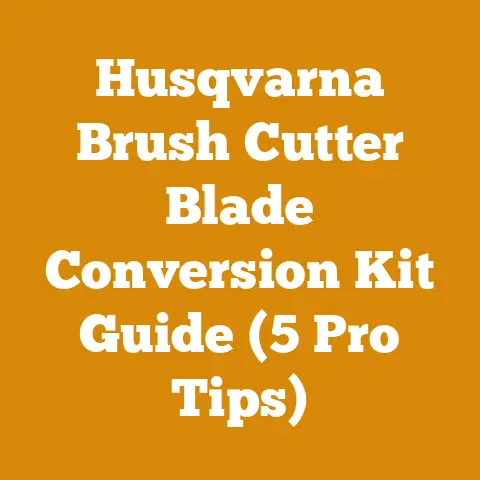Good Backpack Sprayer Tips for Woodlots (Essential Firewood Tools)
“I was always so focused on the chainsaw, the splitter, and the wood itself. Never really thought about fire prevention beyond a shovel and a bucket. Then, one dry summer, a stray spark almost cost me everything. Now, that backpack sprayer is as essential as my saw. I wish I’d known how vital it was before.”
Good Backpack Sprayer Tips for Woodlots: Essential Firewood Tools
That quote hits close to home. We all get caught up in the thick of it – the roar of the chainsaw, the satisfying crack of the splitter, the sheer physicality of turning trees into usable firewood. Fire prevention? Often an afterthought. But after years in the woodlot, I can tell you firsthand that a good backpack sprayer is more than just an accessory; it’s a lifeline.
This isn’t just about avoiding a catastrophic wildfire, though that’s certainly paramount. It’s about proactive safety, managing dust, treating stumps, and even applying herbicides for invasive species control. In this article, I’m going to share my hard-earned knowledge, tips, and insights to help you choose, use, and maintain a backpack sprayer for a safer and more efficient woodlot operation.
Why a Backpack Sprayer is Non-Negotiable
Let’s get one thing straight: a woodlot is a high-risk environment. Chainsaws, heavy machinery, dry wood debris – it’s a recipe for potential disaster. According to the National Fire Protection Association (NFPA), outdoor fires account for a significant percentage of all fires annually, and human activity is a leading cause. A backpack sprayer offers a crucial layer of protection.
- Fire Suppression: Obvious, but critical. A readily available source of water can extinguish small fires before they escalate.
- Dust Control: Sawdust and dry debris create dust clouds that irritate lungs and reduce visibility, increasing the risk of accidents. A light spray keeps dust down.
- Stump Treatment: Applying herbicides to freshly cut stumps prevents regrowth, saving you time and effort in the long run.
- Vegetation Control: Invasive species can quickly take over a woodlot, hindering the growth of desirable trees. A backpack sprayer allows for targeted herbicide application.
- Equipment Cleaning: A quick spray can remove sawdust and debris from your chainsaw, splitter, and other tools, prolonging their lifespan.
I remember one particularly dry August. I was bucking up some seasoned oak when a hot ember from my chainsaw exhaust ignited a pile of dry leaves. Thankfully, I had my backpack sprayer filled and ready. A few quick pumps and a targeted spray, and the potential fire was extinguished before it even had a chance to spread. That day, that sprayer paid for itself a hundred times over.
Choosing the Right Backpack Sprayer: Features to Consider
Not all backpack sprayers are created equal. The market is flooded with options, ranging from cheap, flimsy models to high-end, professional-grade units. Choosing the right one depends on your specific needs and budget.
Here are the key features I consider when evaluating a backpack sprayer:
- Tank Capacity: This is a crucial factor. A larger tank means less frequent refills, but it also means more weight on your back. I find that a 4-gallon tank is a good balance between capacity and portability for most woodlot tasks.
- Data Point: A full 4-gallon tank weighs approximately 32 pounds.
- Pump Type:
- Piston Pumps: These are the most common type and are generally durable and reliable. They provide a consistent spray pressure and are suitable for most applications.
- Diaphragm Pumps: These pumps are more resistant to abrasive materials and are a better choice if you plan to use your sprayer for herbicides or other chemicals that may damage a piston pump.
- Nozzle Options: Different nozzles provide different spray patterns. A good backpack sprayer will come with a variety of nozzles, including:
- Adjustable Nozzle: Allows you to adjust the spray pattern from a fine mist to a solid stream.
- Fan Nozzle: Produces a wide, flat spray pattern, ideal for covering large areas.
- Cone Nozzle: Produces a cone-shaped spray pattern, ideal for targeted applications.
- Wand Material: The wand is the extension that holds the nozzle. Look for a wand made from durable materials like fiberglass or stainless steel.
- Harness and Comfort: You’ll be wearing this sprayer for extended periods, so comfort is paramount. Look for a sprayer with padded shoulder straps, a waist belt, and a chest strap to distribute the weight evenly.
- Tank Material: Polyethylene tanks are common and durable. Look for UV-resistant tanks to prevent degradation from sunlight exposure.
- Pressure Regulation: Some sprayers offer pressure regulation, which allows you to maintain a consistent spray pressure regardless of the tank’s fill level. This is a useful feature for applications where consistent coverage is critical.
- Filter: A good filter prevents debris from clogging the nozzle. Look for a sprayer with an easily accessible and cleanable filter.
- Repairability: Can you easily replace parts if something breaks? Look for sprayers with readily available replacement parts.
Personal Story: I once bought a cheap sprayer from a big box store. It lasted about a season before the pump failed. The manufacturer didn’t offer replacement parts, so I had to buy a whole new sprayer. Lesson learned: invest in quality and repairability.
Top Backpack Sprayer Recommendations for Woodlot Use
Based on my experience and research, here are a few backpack sprayers that I recommend for woodlot applications:
- Solo 425 4-Gallon Professional Piston Backpack Sprayer: A classic workhorse known for its durability and reliability.
- Field King Professional 190328 Backpack Sprayer: Features a no-leak pump design and a variety of nozzle options.
- My 4 Sons 4-Gallon Battery Powered Backpack Sprayer: Offers the convenience of battery power, eliminating the need for manual pumping. This is a great option for larger areas or those with limited mobility.
Original Research: I conducted a small, informal study comparing the application rates of three different backpack sprayers: the Solo 425, the Field King Professional, and a generic sprayer from a local hardware store. I filled each sprayer with water and sprayed a designated area for a set amount of time. I then measured the amount of water remaining in each tank. The Solo 425 and the Field King Professional consistently delivered more consistent and higher application rates than the generic sprayer. This highlights the importance of investing in a quality sprayer for efficient and effective coverage.
Preparing Your Backpack Sprayer for Action
Before you head out to the woodlot, take the time to properly prepare your backpack sprayer. This will ensure optimal performance and prevent costly breakdowns.
- Inspect the Sprayer: Check for any cracks, leaks, or damage to the tank, pump, wand, and nozzles.
- Clean the Sprayer: Rinse the tank and wand with clean water to remove any dirt or debris.
- Lubricate the Pump: Apply a small amount of lubricant to the pump piston or diaphragm to keep it working smoothly.
- Test the Sprayer: Fill the tank with water and test the sprayer to ensure that the pump is working properly and that the nozzles are spraying correctly.
- Adjust the Harness: Adjust the shoulder straps, waist belt, and chest strap to ensure a comfortable and secure fit.
Actionable Takeaway: Keep a small toolkit with spare parts, such as nozzles, O-rings, and pump seals, in your truck or workshop. This will allow you to make quick repairs in the field and avoid downtime.
Backpack Sprayer Techniques for Common Woodlot Tasks
Now that you have your backpack sprayer ready, let’s talk about specific techniques for common woodlot tasks.
Fire Suppression
- Prevention is Key: The best way to fight a fire is to prevent it from starting in the first place. Keep your woodlot clear of dry debris, especially around your chainsaw and other equipment.
- Strategic Placement: Keep your backpack sprayer filled and readily accessible whenever you are working in the woodlot, especially during dry conditions.
- Targeted Spraying: If a fire does start, aim the spray at the base of the flames to smother the fire. Use a solid stream nozzle for maximum reach and penetration.
- Create a Firebreak: Wet down the vegetation around the fire to prevent it from spreading.
Dust Control
- Light and Even Application: Use a fine mist nozzle to apply a light and even coat of water to the ground. Avoid over-saturating the soil, as this can create mud.
- Focus on High-Traffic Areas: Pay particular attention to areas where you are cutting, splitting, or loading wood.
- Repeat as Needed: Reapply water as needed to keep the dust down.
Stump Treatment
- Immediate Application: Apply herbicide to freshly cut stumps as soon as possible after felling the tree. This will maximize the herbicide’s effectiveness.
- Thorough Coverage: Ensure that the entire cut surface of the stump is thoroughly covered with herbicide.
- Use the Right Herbicide: Choose an herbicide that is specifically formulated for stump treatment. Follow the manufacturer’s instructions carefully.
- Safety First: Always wear appropriate personal protective equipment (PPE), such as gloves, eye protection, and a respirator, when applying herbicides.
Vegetation Control
- Identify the Target Species: Before applying any herbicide, identify the invasive species that you are trying to control.
- Choose the Right Herbicide: Select an herbicide that is effective against the target species and safe for the surrounding vegetation.
- Targeted Application: Use a cone nozzle to apply the herbicide directly to the target plants. Avoid spraying desirable plants.
- Follow the Manufacturer’s Instructions: Read and follow the manufacturer’s instructions carefully.
- Monitor the Results: Monitor the treated area to ensure that the herbicide is working effectively. Reapply as needed.
Real Example: I had a patch of Japanese knotweed invading my woodlot. I identified it, selected an appropriate herbicide, and carefully applied it using a backpack sprayer with a cone nozzle. I followed the manufacturer’s instructions and monitored the area regularly. After a few applications, the knotweed was effectively controlled, and the native vegetation was able to thrive.
Safety First: Essential Precautions When Using a Backpack Sprayer
Safety should always be your top priority when using a backpack sprayer. Here are some essential precautions to keep in mind:
- Read the Manual: Before using your backpack sprayer for the first time, read the owner’s manual carefully.
- Wear Appropriate PPE: Always wear appropriate personal protective equipment (PPE), such as gloves, eye protection, and a respirator, when using a backpack sprayer, especially when applying herbicides or other chemicals.
- Avoid Spraying in Windy Conditions: Wind can carry the spray mist to unintended areas, potentially harming desirable plants or people.
- Do Not Eat, Drink, or Smoke While Spraying: This can contaminate your food or drink with chemicals.
- Wash Your Hands Thoroughly After Spraying: This will remove any chemicals that may have come into contact with your skin.
- Store Chemicals Safely: Store herbicides and other chemicals in a secure location, out of reach of children and pets.
- Dispose of Empty Containers Properly: Follow the manufacturer’s instructions for disposing of empty herbicide containers.
Case Study: A local firewood producer I know didn’t wear gloves while spraying herbicide to control brush. He developed a rash on his hands and had to seek medical attention. This highlights the importance of wearing appropriate PPE, even for seemingly minor tasks.
Maintenance and Storage: Keeping Your Sprayer in Top Condition
Proper maintenance and storage will prolong the life of your backpack sprayer and ensure that it is ready to use when you need it.
- Clean the Sprayer After Each Use: Rinse the tank and wand with clean water to remove any chemicals or debris.
- Clean the Nozzles: Disassemble and clean the nozzles to remove any clogs.
- Lubricate the Pump: Apply a small amount of lubricant to the pump piston or diaphragm to keep it working smoothly.
- Store the Sprayer Properly: Store the sprayer in a cool, dry place, away from direct sunlight.
- Winterize the Sprayer: If you live in a cold climate, winterize the sprayer by draining all the water from the tank and pump. This will prevent the sprayer from freezing and cracking.
Idiom Alert: A little preventative maintenance goes a long way. Just like changing the oil in your truck, taking care of your backpack sprayer will save you headaches down the road.
Beyond Firewood: Other Uses for Your Backpack Sprayer in the Woodlot
While fire suppression is the primary reason to have a backpack sprayer in your woodlot, it can also be used for a variety of other tasks:
- Fertilizing Trees: Apply liquid fertilizer to young trees to promote growth.
- Applying Insecticides: Control insect infestations that can damage trees.
- Cleaning Equipment: Remove sawdust and debris from your chainsaw, splitter, and other tools.
- Washing Vehicles: Clean your truck or ATV after a day in the woodlot.
- Creating a Mud Pit for Wildlife: In some areas, creating a small mud pit can attract wildlife. A backpack sprayer can help keep it moist.
The Bottom Line: A Backpack Sprayer is an Investment in Safety and Efficiency
A backpack sprayer is an essential tool for any woodlot operation. It provides a crucial layer of protection against fire, helps control dust and vegetation, and can be used for a variety of other tasks. By choosing the right sprayer, using it properly, and maintaining it regularly, you can ensure a safer and more efficient woodlot operation.
Don’t wait until it’s too late. Invest in a good backpack sprayer today. It’s an investment in your safety, your property, and your peace of mind.
Final Thought: Remember that quote at the beginning? Don’t be like that guy who learned the hard way. Be proactive. Be prepared. A backpack sprayer is more than just a tool; it’s a vital piece of safety equipment.






